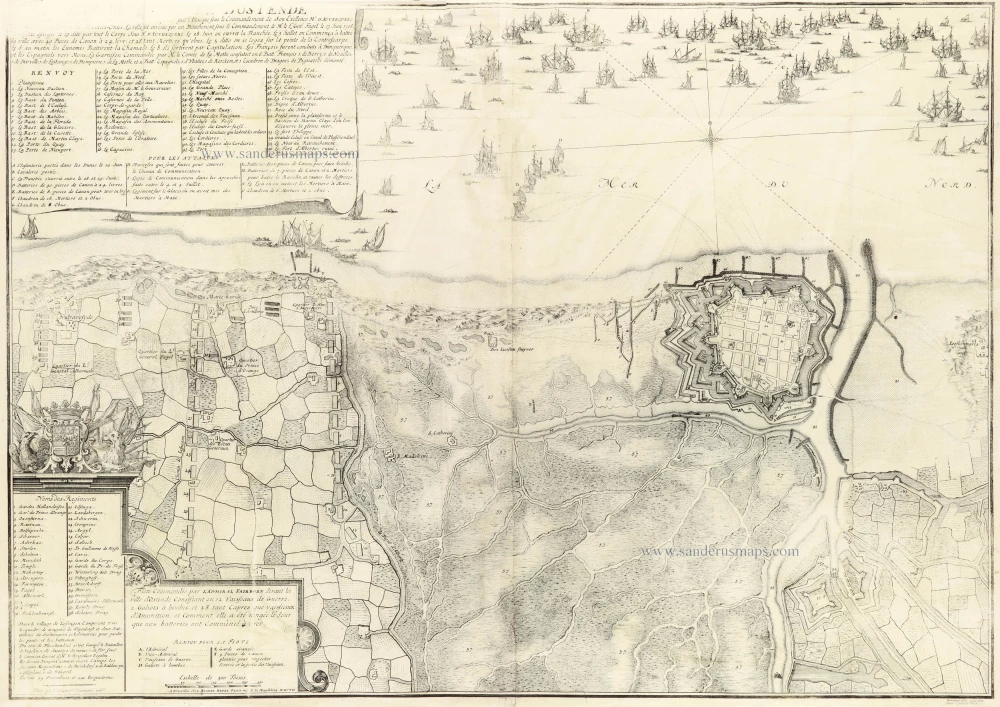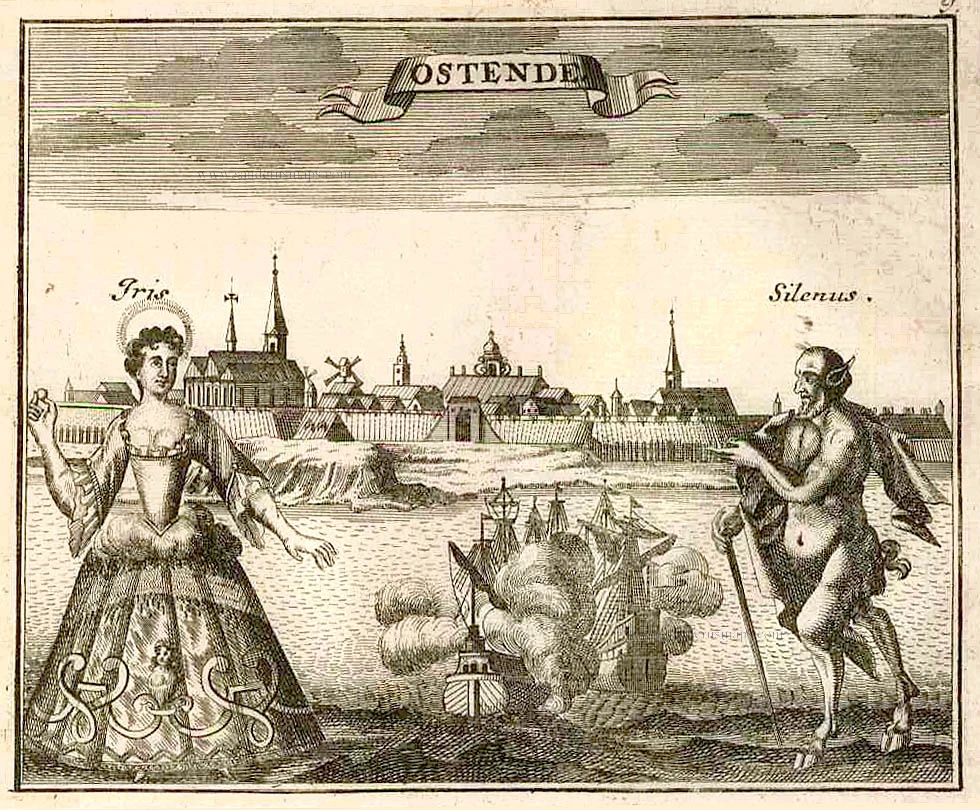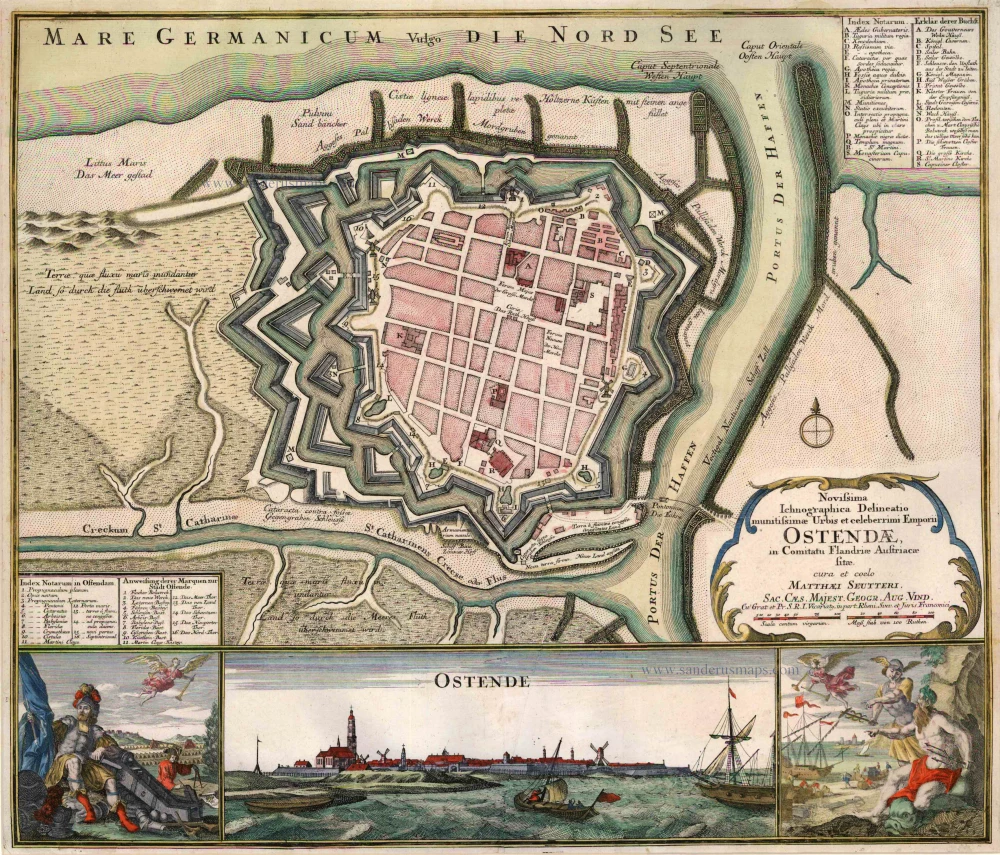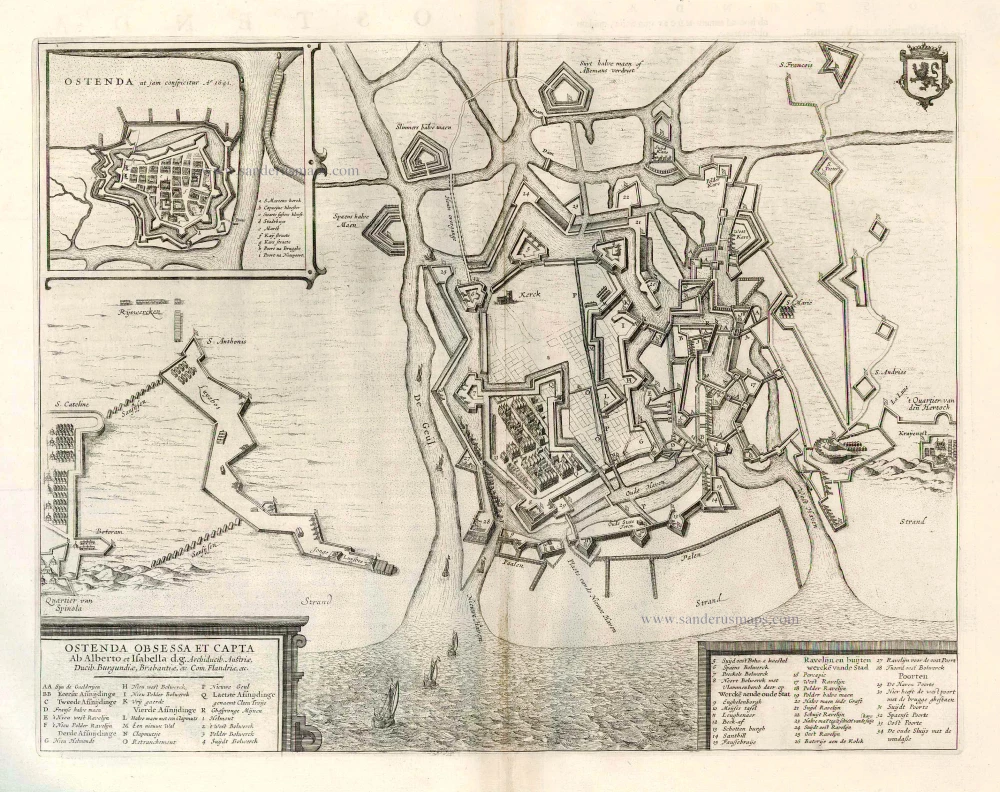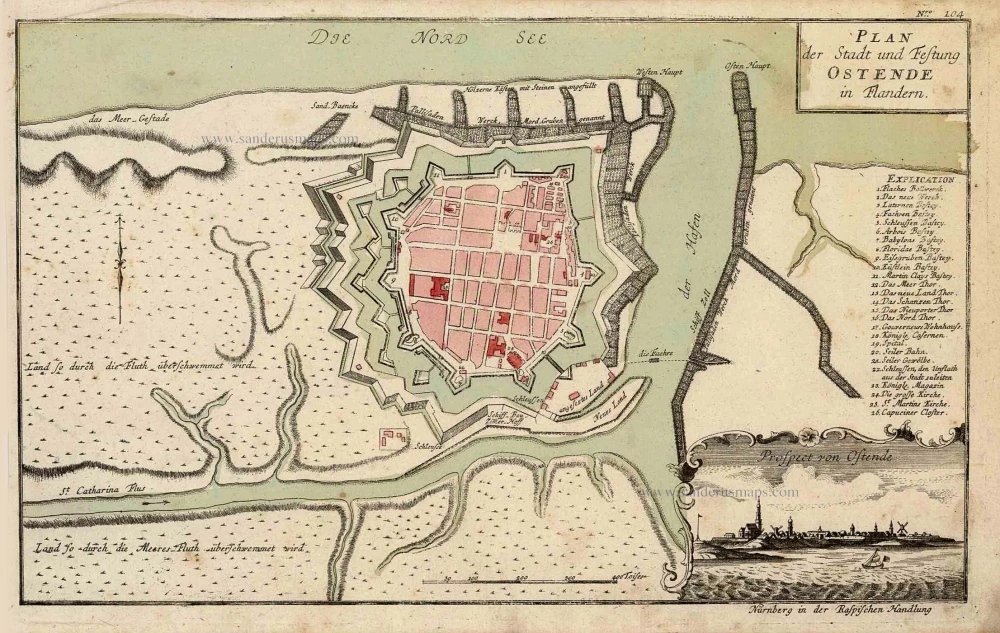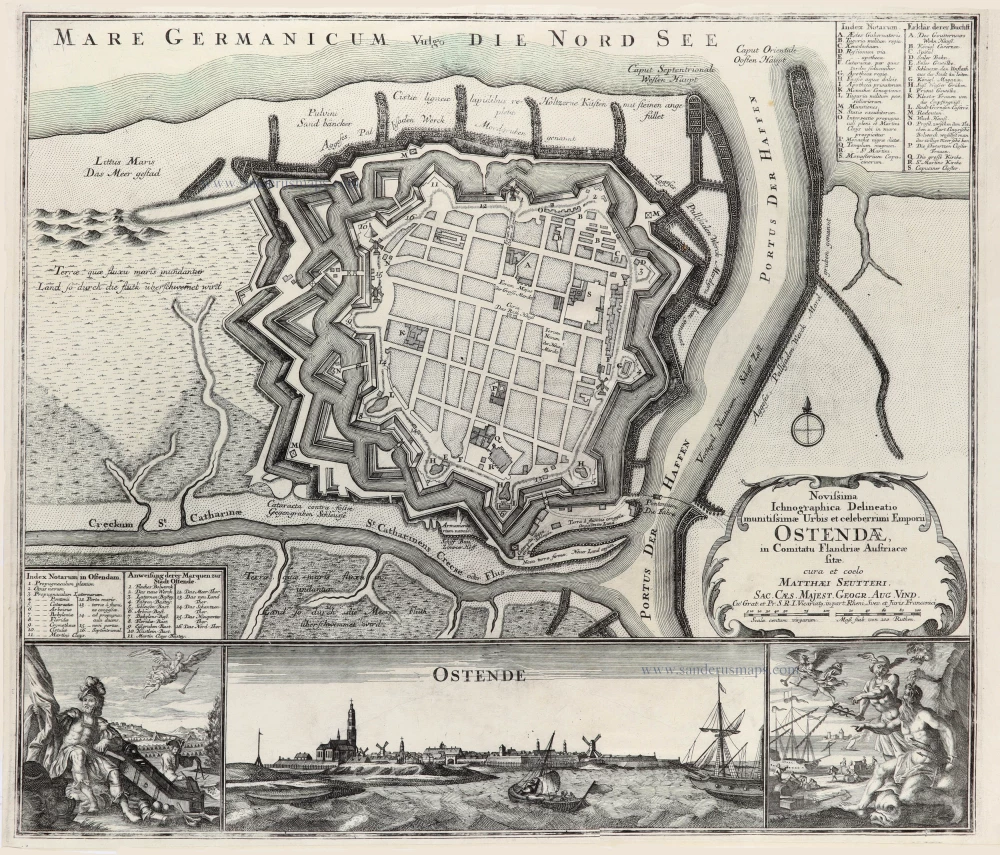Oostende by Eugène Fricx. 1712
Fricx Eugène (1644-c.1740)
The bookseller and printer Eugène Henri Fricx was one of the most crucial map publishers of the Southern Netherlands in the 18th century. He lived in Brussels, where he had his shop on the Rue de la Madeleine. His activities in this field started in 1706 with the production of military plans of battles and sieges of the War of Succession. In the same year, he also started the publication of the map of the Southern Netherlands in 24 sheets; it was finished in 1712, apart from the sheet Luxembourg, which was engraved in 1727. He employed Jean Harrewijn of Brussels as an engraver and Cornelis Marke of Middelburg as a contractor for the 'enluminators'. Although he had children, his business was not continued after his death.
Plan de la ville d'Ostende
Item Number: 30792 Authenticity Guarantee
Category: Antique maps > Europe > Belgium
Oostende by Eugène Fricx.
Title: Plan de la ville d'Ostende
Engraver: Jacques Harrewyn.
Date: 1712.
Copper engraving, printed on paper.
Image size: 515 x 730mm (20.28 x 28.74 inches).
Sheet size: 535 x 750mm (21.06 x 29.53 inches).
Verso: Blank.
Condition: Part of the title not well printed, folds as issued.
Condition Rating: A.
From: Table des cartes des Pays Bas et des Frontières de France, Avec un recueil des plans des villes, sièges et battailles données entre les Hauts Alliés et la France. Bruxelles, H. Fricx, 1712. (Koeman II, p. 109 (Fri 1)
Fricx Eugène (1644-c.1740)
The bookseller and printer Eugène Henri Fricx was one of the most crucial map publishers of the Southern Netherlands in the 18th century. He lived in Brussels, where he had his shop on the Rue de la Madeleine. His activities in this field started in 1706 with the production of military plans of battles and sieges of the War of Succession. In the same year, he also started the publication of the map of the Southern Netherlands in 24 sheets; it was finished in 1712, apart from the sheet Luxembourg, which was engraved in 1727. He employed Jean Harrewijn of Brussels as an engraver and Cornelis Marke of Middelburg as a contractor for the 'enluminators'. Although he had children, his business was not continued after his death.

